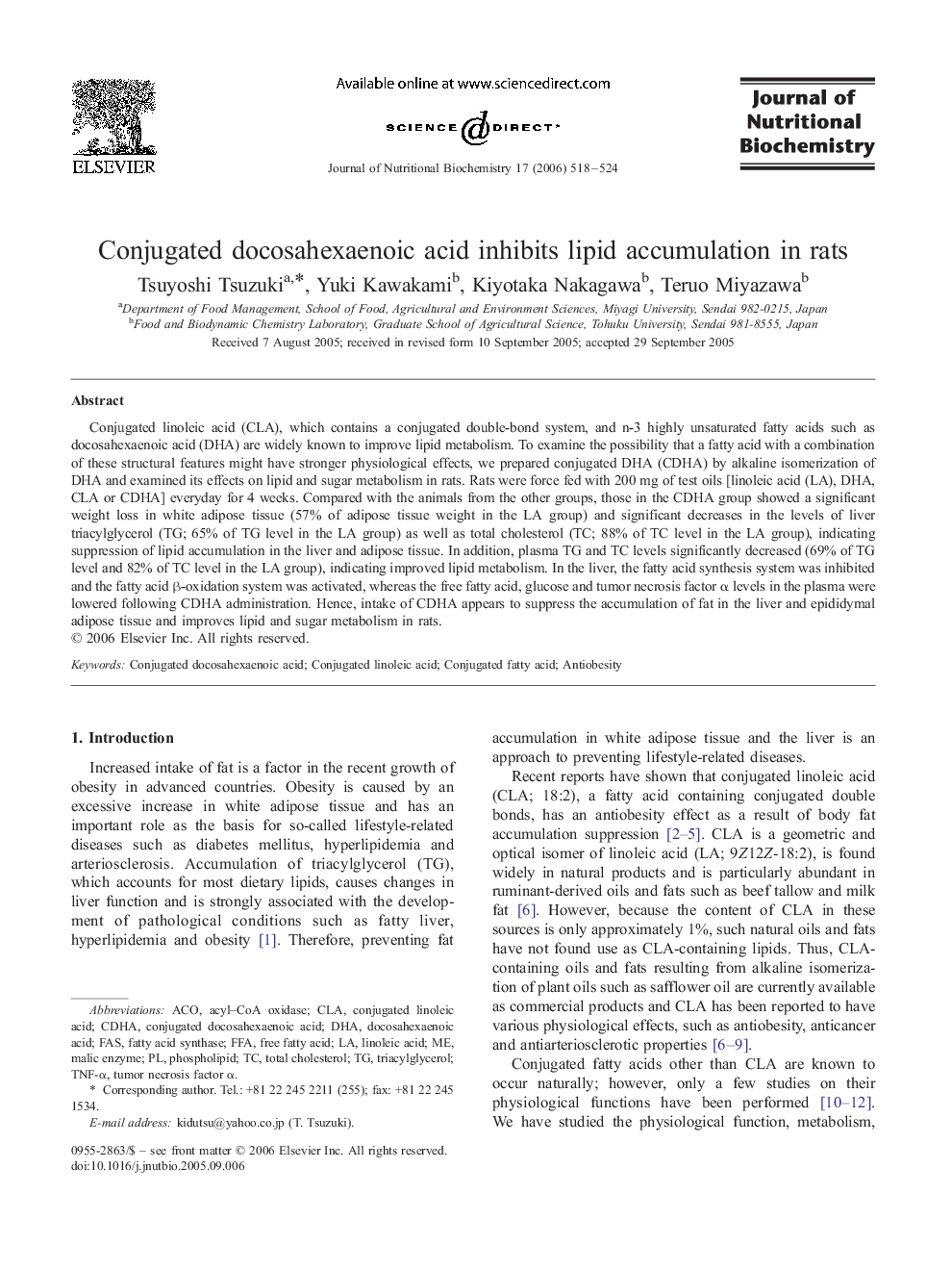| Article ID | Journal | Published Year | Pages | File Type |
|---|---|---|---|---|
| 1991173 | The Journal of Nutritional Biochemistry | 2006 | 7 Pages |
Conjugated linoleic acid (CLA), which contains a conjugated double-bond system, and n-3 highly unsaturated fatty acids such as docosahexaenoic acid (DHA) are widely known to improve lipid metabolism. To examine the possibility that a fatty acid with a combination of these structural features might have stronger physiological effects, we prepared conjugated DHA (CDHA) by alkaline isomerization of DHA and examined its effects on lipid and sugar metabolism in rats. Rats were force fed with 200 mg of test oils [linoleic acid (LA), DHA, CLA or CDHA] everyday for 4 weeks. Compared with the animals from the other groups, those in the CDHA group showed a significant weight loss in white adipose tissue (57% of adipose tissue weight in the LA group) and significant decreases in the levels of liver triacylglycerol (TG; 65% of TG level in the LA group) as well as total cholesterol (TC; 88% of TC level in the LA group), indicating suppression of lipid accumulation in the liver and adipose tissue. In addition, plasma TG and TC levels significantly decreased (69% of TG level and 82% of TC level in the LA group), indicating improved lipid metabolism. In the liver, the fatty acid synthesis system was inhibited and the fatty acid β-oxidation system was activated, whereas the free fatty acid, glucose and tumor necrosis factor α levels in the plasma were lowered following CDHA administration. Hence, intake of CDHA appears to suppress the accumulation of fat in the liver and epididymal adipose tissue and improves lipid and sugar metabolism in rats.
